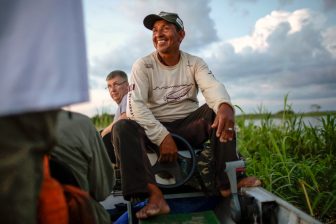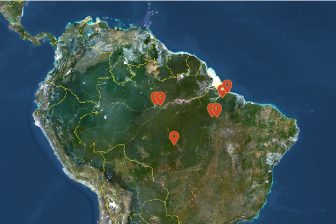This article is part of AQ’s special report on sustainable development of the Amazon.
The agribusiness sector has never been as pressed on the issue of the Amazon as it is right now. We are consistently being questioned — globally, but also by Brazil’s urban population — about the destruction of the rainforest.
First, it is important to point out that when we refer to Amazônia Legal, we are describing an area that incorporates nine states and represents 61% of the country’s territory. And what defines this region goes beyond geography. Looking at its structural characteristics we see that Amazônia Legal includes an important socio-political component, expanding beyond the rainforest to include 20% of the Cerrado savanna and part of the Pantanal wetlands — over 2 million square miles, home to more than 27 million Brazilians.
Our answer to the assertion that our sector is partially responsible for destroying this area lies in the Forest Code of 2012, the most important regulatory framework that we have in terms of environmental protection. Brazil’s environmental legislation, hailed globally as a model for its strictness, requires that 80% of native vegetation within private properties in the Amazon be preserved. Only 20% may be used for production, making the Brazilian Forest Code unique and exemplary in the world.
We are not denying the need to address the horrific problem of illegal deforestation, which is a major challenge that the Brazilian government must fight. I’ll add that stopping the destruction of the forest is also extremely important for rural producers, for two main reasons: First, even if legal agribusiness players are not involved in deforestation, it sullies our collective image. The second reason, of course, is climate change. We too need a healthy natural environment and a stable climate in order to produce while conserving the land. A healthy soil is our main treasure.
It is unfortunate that we are often mistakenly associated with the illegal mining groups, loggers and land-grabbers that purposefully fell trees, burn land and degrade soil and water. We are often described as criminal enterprises ourselves and have the challenge to clearly separate the wheat from the chaff to show our true work.
As a major economic force, we have a role to play in protecting the environment. Brazil’s agricultural sector makes up 24% of the nation’s GDP, employs some 19 million workers, and is the main driver of Brazil’s trade surplus.
Brazil’s transformation into the world’s leader in tropical agriculture began to be noticed in the 1970s, after the creation of the research institute Embrapa. In the 1980s, the practice of the no-till farming method allowed us to reduce production costs and mitigate environmental impacts, drastically reducing soil erosion. Later, in the 1990s, new developments in biotechnology allowed us to harvest crops twice a year. In the 2000s, integration of cattle ranches and farming led to the recovery of thousands of acres of degraded pastures, allowing multiple productive systems to flourish on the same property.
Still, despite the agricultural sector’s successes, challenges lie ahead. As a producer who is fortunate enough to travel regularly throughout rural Brazil, I can attest to this. Transportation infrastructure and logistics remain a major bottleneck, and distribution of our crops and products still leaves much to be desired. At the same time, the reality of 21st-century connectivity has yet to reach all corners of Brazil, while many rural areas lack even the most basic infrastructure. Just as urgent is the approval of a broad program of land regularization for the whole country, and the Amazon in particular. Such a measure would benefit thousands of small rural producers and improve the effectiveness of the Forest Code in the region. Finally, we must highlight the economic value of keeping the forest standing, the need to develop a clear carbon credit scheme and the framework for the new national policy of payment for environmental services. The sheer creation of such a plan is a sign of progress, but it remains plagued by uncertainty. While producers look to abide by the law, the question remains: Who pays for the environmental services provided by preserved land?








